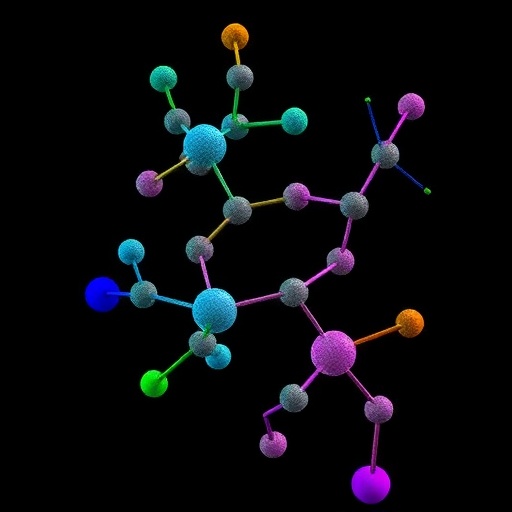In the pursuit of advancing treatments for type 2 diabetes, researchers have made significant strides in developing novel molecules that target peroxisome proliferator-activated receptor gamma (PPARγ). A recent study conducted by Pradhan, Gupta, and Chawla meticulously highlights the rational in silico design of PPARγ agonists, showcasing an integrated approach that combines pharmacophore modeling, three-dimensional quantitative structure-activity relationship (3D-QSAR), molecular docking, molecular dynamics (MD) simulations, density functional theory (DFT), and toxicity predictions. This multifaceted study not only emphasizes the potential of computational methods in drug design but also sheds light on the complexities of targeting PPARγ for therapeutic gains in metabolic disorders.
PPARγ is a pivotal nuclear receptor involved in glucose metabolism and lipid homeostasis. Its activation has been linked to improved insulin sensitivity, making it a prime target for type 2 diabetes management. Recent years have seen an influx of research aimed at identifying and synthesizing PPARγ agonists; however, traditional experimental methods can be time-consuming and resource-intensive. This is where in silico techniques come into play, allowing for a more efficient exploration of potential drug candidates right from the molecular level.
The process starts with pharmacophore modeling, which identifies the necessary chemical features that a compound must possess to interact with the target receptor effectively. This method creates a virtual model that facilitates the screening of vast compound libraries to find those with the highest likelihood of binding to PPARγ. By employing this approach, the researchers efficiently narrowed down their focus on compounds that not only meet the structural criteria but also exhibit significant biological activity.
Next, the team employed 3D-QSAR, a method that correlates the molecular structure of lead compounds with their biological activity quantitatively. This approach provides a predictive framework that can correlate how changes in chemical structure might influence activity at PPARγ. The insights gained from 3D-QSAR are invaluable, guiding further refinement of the lead compounds and enhancing the chances of success in subsequent experimental validations.
Molecular docking is another cornerstone of the integrated methodology. In this step, the selected compounds are virtually ‘docked’ into the active site of the PPARγ protein to predict the strength and nature of their interactions. This simulation offers insights into crucial binding interactions, including hydrogen bonds, hydrophobic contacts, and steric compatibility, aiding in the design of even more potent agonists. The docking studies provide a virtual landscape for understanding how different compounds may influence receptor conformation and, subsequently, its biological activity.
Following the docking studies, the researchers conducted molecular dynamics simulations, which allow for the observation of the behavior of the protein-ligand complexes over time under physiological conditions. This dynamic view offers insights into how the compound may stabilize or alter the receptor’s conformation, which is critical for understanding the long-term efficacy and safety of the drug candidates. This aspect of the study underscores the importance of evaluating the stability of protein-ligand interactions in a simulated physiological environment.
Density Functional Theory (DFT) calculations were also employed to assess the electronic properties of the shortlisted compounds. This quantum mechanical approach provides insights into the reactivity, stability, and energy landscapes of the drug candidates at an atomic level. Understanding these factors can help predict how likely a compound is to interact with biological targets and can highlight potential issues related to reactivity or toxicity.
Toxicity predictions are paramount in the drug discovery process, ensuring that promising candidates do not pose significant adverse health risks. The researchers employed various computational models to assess the potential toxicity of their PPARγ agonists, providing an early warning system that can help cut down on later-stage attrition due to safety concerns. By integrating these predictions, the authors emphasize the importance of a comprehensive safety profile during the early phases of drug development.
The overall outcome of the study signifies an innovative leap towards the rational design of PPARγ agonists, which are critically needed in the context of escalating type 2 diabetes rates across the globe. With a robust methodological framework in place, the researchers successfully identified several potential drug candidates with favorable properties for further study and potential clinical application.
The integration of these advanced computational techniques allows for a streamlined approach to drug discovery, significantly accelerating the pace at which new therapeutics can be developed. As the prevalence of type 2 diabetes continues to rise, such methodologies will be instrumental in uncovering effective treatments that can mitigate the burden of this chronic condition.
In a world where computational resources continue to evolve, the implementation of in silico strategies offers transformative potential for the realm of pharmacology and drug design. The work conducted by Pradhan, Gupta, and Chawla stands as a testament to the promise of computational chemistry, bridging the gap between molecular research and clinical applications.
As advocacy for personalized medicine grows, the research team’s findings highlight the importance of tailored drug design strategies that consider individual variability in drug response. This parallels the ongoing trend within the medical community to adopt more patient-specific approaches in diabetes management.
In conclusion, the rational in silico design of PPARγ agonists presents a promising frontier for combating type 2 diabetes. The multifaceted nature of the research heralds the convergence of computational methods with traditional drug development pathways, highlighting a future where effective treatments can be realized more swiftly and safely.
Ultimately, this integrated study contributes significantly to the field of diabetes research, showcasing how the convergence of technology and pharmacology can yield innovations that enhance patient care and outcomes. As researchers continue to refine these methodologies, the potential for discovering new, effective therapeutic agents for metabolic disorders remains bright, holding promise for millions affected by type 2 diabetes worldwide.
Subject of Research: Rational in silico design of PPARγ agonists for type 2 diabetes.
Article Title: Rational in silico design of PPARγ agonists for type 2 diabetes: an integrated study using pharmacophore modeling, 3D-QSAR, molecular docking, MD simulations, DFT, and toxicity prediction.
Article References:
Pradhan, T., Gupta, O. & Chawla, G. Rational in silico design of PPARγ agonists for type 2 diabetes: an integrated study using pharmacophore modeling, 3D-QSAR, molecular docking, MD simulations, DFT, and toxicity prediction. Mol Divers (2025). https://doi.org/10.1007/s11030-025-11395-0
Image Credits: AI Generated
DOI: https://doi.org/10.1007/s11030-025-11395-0
Keywords: Type 2 diabetes, PPARγ agonists, in silico design, pharmacophore modeling, 3D-QSAR, molecular docking, molecular dynamics, density functional theory, toxicity prediction.
Tags: 3D-QSAR analysis for pharmacologycomputational methods in pharmacologydensity functional theory applicationsin silico drug design techniquesinsulin sensitivity enhancement strategiesmetabolic disorder therapiesmolecular docking in drug developmentmolecular dynamics simulations in biochemistrypharmacophore modeling methodsPPARγ agoniststoxicity predictions in drug discoverytype 2 diabetes treatments





